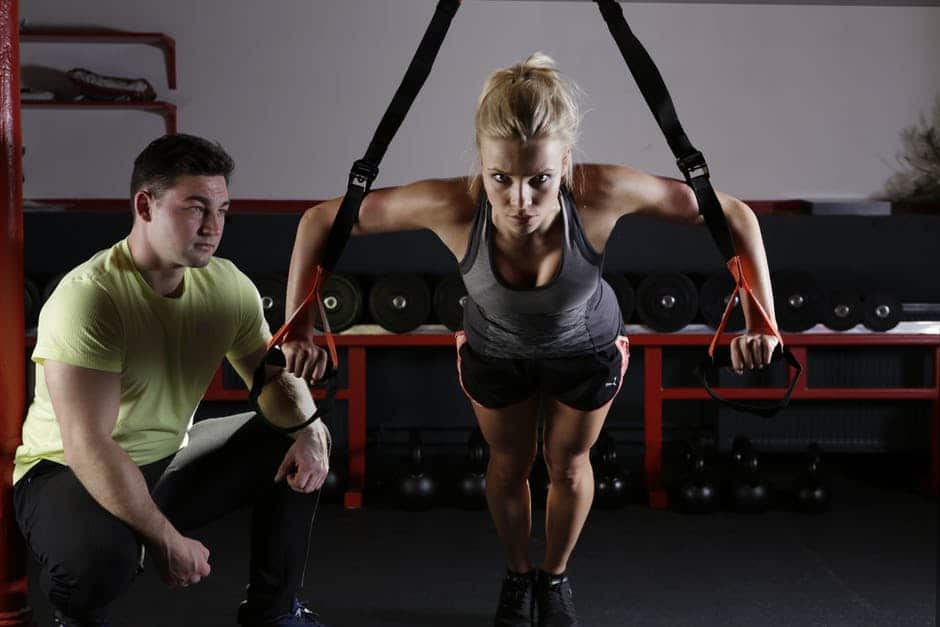
If you’re looking for a reliable way to build strong muscle mass in your bodybuilding quest, then you’re looking for resistance bands. You should always have more than one trick in your total training package. And there are many advantages to incorporating resistance bands into routines. They’re less expensive than free weights. They’re far less cumbersome than weights for travel. And workouts with them result in genuine, strong muscle. Celebrities like Dave Bautista and Oscar de la Hoya are among those who sing the praises of these bands. Read on to learn more about them.
How Are Resistance Bands Used in Training Programs?
Resistance bands have been with us for more than 100 years, and the first ones were simply pieces of rubberized tubing. Originally intended just for physical therapy, the bands were quickly revealed to have many health benefits for non-patients as well. Today, there’s a resistance band for every exercise need. But if the right resistance bands aren’t paired with the right workout program, they essentially become glorified rubber bands. With the right program, these bands don’t just offer a vital assist in strengthening muscle mass. Stamina and greater flexibility result as well.
But it seems that everyone has a website out there these days hawking fitness products and programs. Are there any that deliver the benefits of resistance band training safely? The “P90x3” is an intensive workout program developed by bodybuilder and fitness guru Tony Horton. Designed to be completed at home, the program easily incorporates resistance band routines. What equipment you need for P90x3 workout is conveniently provided with instructional DVDs and other equipment that includes resistance bands.
How Resistance Bands Workouts Help You Gain Muscle Mass
There are other programs that can get exercisers started with at home resistance band training. One good example is Equinox Gym’s at home workout. While free, the program is also shorter than P90x3’s and includes no equipment. Users of this program will need to acquire resistance bands and should consider and acquire other equipment that may be needed (mats, etc.) before undertaking it.
Resistance bands are used to:
- target smaller muscle groups
- build stamina
- increase flexibility
- increase range of motion
- build muscle mass
- burn fat and calories
To avoid injury and get maximum benefit from using these bands, exercisers are cautioned to always use the correct forms in working out with resistance bands. These techniques often entail proper hand and foot positioning, and slow, repetitive movements. But if exercisers have any questions about appropriate workout forms, then they should work initially with a trainer or consult an instructional video before proceeding.
Although there can be some variation among brands, these bands are usually grouped by the following colors to indicate resistance levels. Generally:
- yellow=light resistance
- red=medium resistance
- green=heavy resistance
- blue, black, and silver bands=varying degrees of extra heavy resistance
Bodybuilders who want to incorporate weight lifting into resistance band workouts should be aware that a different type of resistance band (one that can repeatedly be wrapped around a pole) is needed for these exercises.
Resistance Band Exercises
Squats
- Hold band in each hand in front of you.
- Step on band with both feet. Feet should be shoulder-width apart. Still holding the band, bring both hands up to shoulder level and hold them there.
- Ease down into the squat position, still standing on the band. Coming back up out of the squat position ends the first repetition.
- Plan on doing two to three sets of this exercise, with 12 to 15 repetitions per set.
This particular exercise benefits thigh muscles.
Chest Presses
- Put the band on the floor. Lie down on it with your back.
- Hold an end of the band in each hand.
- Lift one arm to the ceiling and return to the chest position. Repeat with the alternate arm. Both arms equal one repetition.
- Plan on doing two to three sets of this exercise, with 12 to 15 repetitions per set.
This particular exercise benefits biceps, triceps, and chest and shoulder muscles.
Rowing
- Place band on the ground. Stand on it with both feet. The feet should be hip-width apart. Bend your knees slightly.
- Hold the band in each hand, your palms facing each other. Let your arms hang at your sides. Slightly bend your elbows.
- Lift both hands to shoulder height, keeping elbows slightly bent. Returning both hands to your sides ends the first repetition.
- Plan on doing two to three sets of this exercise, with 12 to 15 repetitions per set.
This particular exercise benefits arm and shoulder muscles.

Final thoughts
Finally, although the pluses of resistance training are considerable, as with all exercise equipment, there are cautions. These bands can wear out and break suddenly. Always use them appropriately, and with the right exercise. It can be harder to track gains with bands as opposed to other kinds of resistance equipment. And weights remain the more effective way for large and quick muscle gain. But for those looking for greater flexibility and exercise for more overall muscle groups, resistance band workouts are a great addition to muscle achieving goals.


